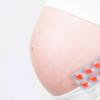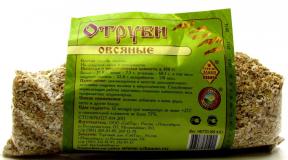Tetracycline Latin name. Tetracycline - instructions for use, side effects, cost and analogues. Price where buy
Tetracycline - an antibiotic of a wide range of action, has a bacteriostatic action.
The drug destroys gram-positive and gram-negative bacteria. Widespread use of tetracycline received as a drug to treat various purulent skin diseases (including furunculese, acne), inflammatory processes respiratory tract (Angina, bronchitis, pneumonia, etc.) and the urinary system (gonorrhea, syphilis, etc.).
It has various dosage forms: Tablets for intake, ointment ointment. It is used to treat infectious diseases whose pathogens are pathogenic bacteria sensitive.
Clinical and Pharmacological Group
An antibiotic of a wide range of action.
Terms of sale from pharmacies
Can buy According to the doctor's prescription.
Price
How much does Tetracycline cost in pharmacies? The average price is at the level of 100 rubles.
Composition and form of release
Tetracycline tablets have pink color, round shape and biconide surface. The main active substance of the drug is tetracycline, its content in one tablet is 100 mg. It also includes additional components to which include:
- Calcium stearate.
- Macrogol.
- Titanium dioxide.
- Polyvinyl alcohol.
- Microcrystalline cellulose.
- Talc.
- Croskarmelloz sodium.
Tablets are packaged in a blister of 20 pieces. Cardboard package contains 1 blister with tablets, as well as instructions for the use of the drug.
pharmachologic effect
By classification this drug Included in antibiotics of the tetracyclinic group. It is active in relation to many gram-positive microbes: Clostridium SPP., Staphylococcus SPP., Listeria SPP., Streptococcus Pneumoniae, Bacillus Anthracis, Actinomyces Israelii. Furthermore, the tool can be used against many gram-negative organisms: Haemophilus ducreyi, Salmonella spp, Acinetobacter spp, Yersinia pestis, Haemophilus influenzae, Bartonella bacilliformis, Borrelia burgdorferi, Enterobacter spp, Bordetella pertussis, Klebsiella spp, Vibrio fetus, Shigella.... SPP., Francisella Tularensis, Vibrio Cholerae, Rickettsia SPP., Escherichia Coli, Brucella SPP.
The medicine is also active to Chlamydia Psittaci, Treponema SPP., Calymmatobacterium Granulomatis, Chlamydia Trachomatis, Mycoplasma Pneumoniae.
The degree of suction of the drug, in an empty stomach - 75-77%, in the case of use during food, absorption decreases. With plasma proteins, the active substance binds to 55-65%. When orally use, the maximum plasma concentration is marked after 2-3 hours. It gradually decreases for 8 hours.
Finding into the body, the active substance accumulates in the liver, lungs, kidneys, as well as in organs that differ in the developed reticulous endothelial system. Contents in bile approximately 5-10 times greater than in serum. Tetracycline hydrochloride also accumulates in bone tissue, dentine, tumor tissues, enamel of dairy teeth. Penetrates the placental barrier and in milk during lactation.
The half-life is 6-11 hours. At 20-50%, the medicine is excreted through the intestines.
Indications for use
The official instruction on the use of tetracycline tablets indicates that they are effective in the following pathologies:
- All infectious diseases caused by the drug sensitive to the drug microorganisms.
- Intestinal Amebiaz, Cholera, Siberian ulcers, brucellosis, ricketersiosis, syphilis, tularemia, trachoma, fryrasia, lesteriosis, not complicated by gonorrhea, plague, granuloma, chlamydiasis, psytacosis, actinomycosis, etc.
- Infections of the skin, bones, soft tissues, mucous membranes (gingivitis, stomatitis, including ulcerative-necrotic), acne rash, carbunculosis, furunculosis, skin suppuration, conjunctivitis.
- Bacterial infections of respiratory, urinary tract.
Contraindications
Sheath-covered tablets:
- leukopenia;
- children's age up to 8 years;
- the second and third trimesters of pregnancy;
- breastfeeding period;
- increased individual sensitivity to the components of the drug.
Tetracycline in the form of tablets with caution is prescribed to patients with renal failure.
Dosage and method of application
As indicated in the instructions for the use of tetracycline tablets are taken inward, drinking with a large amount of fluid.
Adults, as a rule, are prescribed 4 times a day at 0.25-0.5 g or 2 times a day (every 12 hours) to 0.5-1. Maximum dose - 4 g per day. Children from 8 years are prescribed 4 times a day (every 6 hours) at 6.25-12.5 mg / kg or every 12 hours of 12.5-25 mg / kg.
- With an uncomplicated gonor, the drug is prescribed in an initial one-time dose of 1.5 g, after which for 4 days every 6 hours of 0.5 g (total dose - 9 g).
- In the treatment of acne, tetracycline is used by 0.5-2 g per day. With the improvement of the condition (usually after 3 weeks), the dose is gradually reduced to supporting - 0.125-1 g. Adequate remission of acne can be achieved during intermittent therapy or drug intake every other day.
- In case of early syphilis, for 15 days, 0.5 g of tetracycline should be taken every 6 hours, with a late syphilis, the drug is taken within 30 days.
- In the treatment of brucellosis for 3 weeks every 6 hours, 0.5 g of tetracycline is shown simultaneously with intramuscular administration of 1 g of streptomycin (during the first week - every 12 hours, during the second week - 1 time per day).
- With uncomplicated urethral, \u200b\u200brectal and endocervical infections caused by chlamydia trachomatis, the drug at a dose of 0.5 g should be taken 4 times a day for at least 7 days.
Side effects
Possible adverse reactions:
- CNS: headache, raising RF pressure, dizziness;
- urinary system: azotemia, hypercreaticinemia;
- bloodmarkes: hemolytic anemia, neutropenia, thrombocytopenia, eosinophilia;
- organs digestive system: Dysphagia, increased sensitivity of the papillars of the language, dull feeling of hunger, diarrhea, glossitis, gastritis, hepato toxic action, pancreatitis, enterocolitis, vomiting, nausea, esophagitis, stomach ulcers and duodenal gut, increasing the activity of liver transamamine, dysbacteriosis;
- allergies and immunopathological reactions: skin hyperemia, swelling, maculopapulous rash, systemic red lupus, anaphylactoid reactions, photosensibilization;
- others: superinfection, hypovitaminosis in, changing the color of the enamel of dairy teeth, candidiasis, stomatitis.
Overdose
Exceeding the recommended therapeutic dosage of tetracycline tablets is accompanied by nausea, vomiting, the appearance of blood in urine (hematuria). In this case, after pre-washing of the stomach, intestines, as well as the reception of intestinal sorbents (activated carbon), symptomatic therapy is carried out in a medical hospital, as there is no specific antidote for tetracycline.
special instructions
Before you start using the drug, familiarize yourself with the special instructions:
- The use of tetracycline in children during the development of the teeth can lead to an irreversible change in their color.
- During the treatment period for the prevention of hypovitaminosis, vitamins of B, K, beer yeast should be applied.
- For long use It is necessary to periodically monitor the functions of the kidneys, liver, blood formation organs.
- Tetracycline can not be taken simultaneously with milk and other dairy products, because In this case, the absorption of the antibiotic is disturbed.
Interaction with other drugs
When using the drug, it is necessary to take into account interaction with other drugs:
- With the simultaneous use of tetracycline with retinol, the development of intracranial hypertension is possible.
- With simultaneous use with a skewer or a bears, there is a violation of tetracycline absorption.
- Preparations containing metal ions (antacides, preparations containing iron, magnesium, calcium) are formed with tetracycline inactive chelates, and therefore it is necessary to avoid simultaneous purposes.
- It is necessary to avoid combination with penicillins, cephalosporins that have a bactericidal effect and which are antagonists of bacteriostatic antibiotics (including tetracycline).
Tetracycline-Belmed - antibiotic. The active ingredient, tetracycline hydrochloride, refers to one of the drug groups - antibacterial agents for systemic use, tetracycline.
Tetracycline-Belmed is used to treat the following infections:
Respiratory infections such as pneumonia, bronchitis and cough
infection urinary tract
sexually transmitted diseases such as chlamydial infection, gonorrhea and syphilis
skin infections such as acne
Eye infection, such as conjunctivitis
infections caused by rickettsies, such as fever ku and ticking fever
Other infections, including brucellosis, ornithosis, plague, cholera, leptospirosis, gas gadget, tetanus.
Do not take the drug if
You are allergic to tetracycline, other similar antibiotics (such as minocycline, doxycycline) or another component of this drug, specified in the section "Composition"
You have been suffering from kidney or liver disease for a long time or you have severe kidney disease
You have a systemic red lupus - a disease in which rash is observed (especially on the face), hair loss, fever, discomfort and joint pain
You have less than 18 years
You are pregnant or breastfeed
You have reduced the number of leukocytes in the blood
special instructions and precautions "Type \u003d" Checkbox "\u003e
Special instructions and precautions
Before applying the drug Tetracycline-Belmed; Consult with your attending physician if:
You have myasthenia gravis - a disease for which muscle weakness is characterized, the difficulty of chewing and swallowing, an inadvertent speech
You suffer from kidney or liver diseases
You have increased sensitivity to sunlight
Tetracycline-Belmed contains food dyes Karmuzin Lake and Pono 4R Lake, which can cause an allergic reaction.
Other Preparations and Tetracycline-Belmed
Consult with your doctor if you accept, recently accepted or you can start taking any other drugs. This also applies to any drugs discharged without a doctor's prescription. Consult with your doctor if you apply:
Penicillins, such as amoxicillin, flukloxacillin, phenoxymethylpenicillin
Cephalosporins, such as Ceftriaxon, Cefazolin, Cefpin, Cefalexin, Cephissim and others
vitamin A
Retinoides, such as tertinoin and adapal, which are used to treat eczema, acne and other skin diseases
Preparations for thinning blood and preventing the formation of thromboms such as Warfarin and Phoenindion
Preparations that strengthen urine release (diuretics), such as furosemide and spironolactone
Preparations for the treatment of diarrhea, such as kaolin-pectin and bismuth subsalicylate
Hymmipcin, which is used to treat purulent diseases
Preparations for treating diabetes, such as insulin, glyclaside and tollyatamide
drugs that can cause damage to the liver (find out from a doctor if it applies to drugs that you take)
Atovakvon, which is used to treat pneumonia
Theophylline used for the treatment of diseases of the respiratory system
Barbiturates and other medicines received for cramps such as carbamazepine, diphenylhydantoin and prison
Antacids, which are used to treat digestive disorders and heartburn, as well as any drugs containing aluminum, calcium, iron, magnesium, bismuth or zinc, because They can reduce the effectiveness of the drug Tetracycline-Belmed
Sukralfat, which is used to treat ulcers
Lithium, which is used to treat psyche disorders
Digoxin, which is used to treat arrhythmia and heart failure
Methotrexate, which is used for treatment rheumatoid arthritis
Strontium Rannel, which is used for the treatment of osteoporosis
Colestipol, swieramin, which are used to reduce cholesterol
Ergotamine and Metisrigid, which are used for the treatment and prevention of migraine
Metoxifluran (anesthetic). If you need an operation, let me know a doctor or a dentist that tetracycline-Belmed
Tetracycline-Belmed can reduce efficiency oral contraceptives. During treatment, additionally use another contraceptive method.
Tetracycline-Belmed with food, beverages and alcohol
The drug should be taken inside an hour before or 2 hours after meals.
Do not take tetracycline-whitemed together with food, milk or dairy products, because They can reduce the effectiveness of the drug.
Operations and analyzes
If you are treated for any disease, please inform your doctor or a dentist that Tetracycline-Belmed is taking.
With long-term treatment, it may be necessary to perform blood test, evaluation of the renal function and liver.
Pregnancy, breastfeeding and fertility
If you are pregnant or breastfeed, you think that you can be pregnant, or you are planning a pregnancy, before the use of the drug, consult your attending physician.
Do not use this drug during pregnancy or breastfeeding if your attending doctor does not consider it necessary. Tetracycline-Belmed can affect the development of your child.
vehicles and work with the mechanisms "Type \u003d" Checkbox "\u003e
Transportation of vehicles and work with mechanisms
Tetracycline-Belmed does not affect the ability to control vehicles and work with mechanisms.
Application
Always take this drug in full accordance with the recommendations of the attending physician. When doubt, consult with the attending physician.
Tetracycline-Belmed should be taken:
Your attending physician will tell you what dose is optimal for you, because It depends on your condition. Take Tetracycline-Belmed at least 10 days if your attending physician did not give you other recommendations.
Adults and elderly people:
250 mg every 6 hours. The first reception can be 500 mg (5 tablets). For heavy infections The doctor can assign you 500 mg (5 tablets) every 6 hours.
Features of use in some infections:
Skin infections: 250-500 mg per day for one or more receptions for 3 months
Brucellosis: 500 mg 4 times a day in combination with streptomycin
sexually transmitted diseases: 500 mg 4 times a day for 7-30 days depending on your condition
Application in children
Due to the presence of karmuzin (E-122) as part of the dye, Tetracycline-Belmed drug is contraindicated to use in children.
Tetracycline can cause long-term staining of the enamel of the teeth and affect the development of the skeleton bones.
Mode of application
Squeeze the tetracycline-Belmed glass of water an hour before or two hours after meals.
Swallow the tablet sitting or standing, do not take the drug immediately before bedtime.
If you applied Tetracycline-Belmed preparation more, it followed
If you have taken too much Tetracycline-Belmed, immediately consult a doctor. Overdose symptoms include nausea, crystals or blood in the urine, hypersensitivity reactions.
If you missed the reception of the drug Tetracycline-Belmed
If you missed Tetracycline-Belmed preparation, accept it as soon as remember this. But if there is already almost the time of the next reception, wait for the time and take the usual dose of the drug. Do not take a double dose to compensate for missed.
If you stop the reception of the drug Tetracycline-Belmed
Continue taking Tetracycline-Belmed as much as a doctor prescribed, even if you feel better. If you do not graduate a course of treatment, the infection may return.
Possible unwanted reactions
Like all drugs, Tetracycline-Belmed can cause unwanted reactions, but they do not occur.
Immediately stop taking Tetracycline-Belmed and consult a doctor if you feel any of the unwanted reactions below - you may need emergency medical care:
Sudden swelling of lips, face, throat or language, rash, difficulty swallowing or breathing. These symptoms may be signs of severe allergic reaction (anaphylaxis) and may be life-threatening
Strong headache, dizziness, "ringing" in the ears, fuzzy vision, "dead zones" and bias in the eyes. These symptoms may be signs of high intracranial pressure
The rash similar to the target or circles, often with blisters in the center. Later, blisterings can cover a large area, skin peeling can begin. Ulcers can also be observed in the mouth, throat, nose or outdoor genital organs, redness and swelling of the eyes (conjunctivitis), symptoms resembling flu. These phenomena are characteristic of Stevens-Johnson's syndrome and toxic epidermal necrolis, which carry a threat to life
worsening or loss of vision
Strong or long-term diarrhea with blood impurities or mucus - it may be a sign of severe intestinal inflammation
Abdominal pain and back can be a sign of inflammation of the pancreas (pancreatitis).
These unwanted reactions may occur:
Seldom(can manifest themselves less than 1 of 1,000 people);
liver inflammation (hepatitis), liver failure, yellowing of the skin or eye proteins (jaundice), change the liver function (determined by biochemical analysis blood)
Increased urea levels, phosphates or blood acidity, changes in the number and types of blood cells. If you notice the frequent appearance of bruises, bleeding, sore throat, infection, fever, permanent sense of fatigue, shortness of breath or unusual skin pallor - inform your doctor, you may need to perform blood test
sores in the throat, difficulty swallowing
Kidney problems causing urine change, fatigue, weakness, shortness of breath and swelling due to fluid delay in the body.
Frequency unknown (Frequency cannot be estimated based on available data):
Increased sensitivity to sunlight or artificial ultraviolet radiation, causes And burning skin. You should avoid sunlight and ultraviolet
Excessive growth of sustainable microorganisms, which leads to infections such as thrush
Pseudomambranous colitis, the symptoms of which include diarrhea, discomfort in the abdomen and an increase in body temperature
The exacerbation of the system of red lupus, which is manifested by a rash, fever and pain in the joints
Strengthening muscle weakness in patients suffering from myasthenia gravis
headache
Stomach disorder, nausea, diarrhea, loss of appetite, staining of the enamel of teeth, inflammation of the pancreas (pancreatitis), which cause discomfort and abdominal pain
Violation of the kidney function, which leads to a change in the frequency of urination, swelling of the legs or ankles
liver fluid dystrophy, which causes a sense of fatigue and pain in the top of the abdomen
color change thyroid gland (It is not known whether its function is disturbed).
Message about unwanted reactions
If you have any unwanted reactions, consult your doctor. It also applies to any side effects that are not specified in this liner. You can also report unwanted reactions to the information database of unwanted reactions (actions) for drugs, including reports of the ineffectiveness of drugs identified in the state of the state (UE Center Expertise and Health Testing Center, RCeth.BY). Reporting about unwanted reactions, you help to get more information about the safety of the drug.
Structure
Active substance Tetracycline-Belmed drug is a tetracycline hydrochloride - 100 mg.
Excipients: Potato starch, Pisidone K-25, Calcium Stearate, Sodium Laurilsulfate, Cellulose Microcrystalline, Aquarius Prefererred Pink. The composition of the shell Aquarius Prefererred Pink: hydroxypropylmethylcellulose, copovidone, polydektrosis, polyethylene glycol 3350, Caprilik / Cappick triglycerides (medium chain triglycerides), titanium dioxide, Karmuzin Lake (20-26%), Pono 4R Lake.
Appearance The drug and the contents of the package "Type \u003d" Checkbox "\u003e
Appearance of the drug and packaging content
Tablets covered with film shell, pink color, round, biconvenets. The fracture shows a yellow core. On the surface of the tablets is allowed to roughness of the film coating.
10 tablets in the contour cellular packaging of polyvinyl chloride film and aluminum foil. One or two contour packages together with the liner is placed in a pack of cardboard.
Holder registration certificate and manufacturer:
RUE "BelmedPreparats",
Republic of Belarus, 220007, Minsk,
ul. Fabrichus, 30, tel. / Fax: (+375 17) 220 37 16,
Tetracycline - antibiotic antimicrobial action. This budgetary medication of the tetracycline group was first synthesized in the middle of the last century, and since then it occupies a leading position in the list of leading drugs. In the market of modern medical goods, it is presented in four versions:
- eye ointment (1%);
- a liniment intended for outdoor use (3%);
- solid dosage form, having a flowability and used for the preparation of injection solutions;
- pills.
Circle activity
The principle of antibiotic action is based on its ability to suppress protein synthesis in microbial cells, as a result of which the process of reproduction of bacteria in the human body is stopped.
Despite the fact that as a result of many years of use, many pathogenic agents appeared immunity to tetracycline, a significant part of them continues to maintain sensitivity to the action of the drug.
The most effectively medication affects the microorganisms of the following species:
- gram-positive - staphylococcis (including golden staphylococcus), pneumococci, lettering infections (among which the pathogen of the Siberian ulcers);
- gram-negative - hemophilas (causing mucous-purulent conjunctivitis, meningitis and other invasive infections, as well as soft chance); intestinal and cough sticks, some kinds of Shigell, Klebsiel; In addition, the bacteria caused by Tularemia, plague, boronellosis and a number of other dangerous ailments.
If the patient has contraindications to the treatment of pennitiline, tetracycline is prescribed to combat chlamydia, mycoplasmas, neiserias, clostrids, etc.
Pharmacokinetics
The medicinal product is characterized by good suction:
- After taking the drug tetracycline in the form of a tablet, the largest concentration of the substance focuses in the body after 2-3 hours, then the level decreases. Food slows down the absorption of the medication 2 times.
- Intravenous infusion increases the bioavailability of the antibiotic to 100% and accelerates the achievement of the maximum position of the substance in the blood.
- number drug In the bloodstream in injections is about 40% of the initial dose of the drug.
Tetracycline is distinguished by rapid penetration into biological fluids and organs, while research confirms the absence of a medication properties to accumulate in large volumes in the most vulnerable systems and tissues.
The selection process from the body is carried out mainly with kidney, to a lesser extent - through the intestines.
Distribution in organs
In the human body, tetracycline accumulates unevenly. Peak concentrations of the drug after its acceptance are observed in the spleen, lungs, lymph nodes and kidneys. Somewhat less - in bone and tumor tissues.
It should be noted that the negative parties of the antibiotic are the ability to penetrate:
- in breast milk;
- the body of the emerging fetus through the placenta.
The barrier between the CNS and the circulatory system practically does not allow the drug to enter the brain shell, that is, for the treatment of these departments, it is inappropriate.
Application: Tetracycline and its forms
Purpose medication The tablets occur in cases of identifying such diseases as:

Reception of medication is administered orally.
The eye ointment containing in one gram of 0.01 g of an antibiotic affects the sectors of the age infected with the pathogens of the following diseases:
- trachoma;
- keratitis;
- conjunctivitis;
- blepharitis.
 The tool is used by laying for the lower eyelid.
The tool is used by laying for the lower eyelid.
Tetracyclined liniment, which includes 0.03 grams active substanceapplied externally. What does the drug help? For the most part, it is prescribed to eliminate acne rashes and minecraft infections, eczema.
Indications for the use of injections of tetracycline hydrochloride are severe diseases in which it is necessary to create a high concentration of the antibiotic in the blood in a short period.
Dosage tablets
Most full information On the use of antibiotics, you can learn from the instructions for Tetracycline preparation. Annotation is attached to all packaging, regardless of the form of release.
In briefly about dosing mode, it should be noted that the maximum amount of drug allowed for use within 24 hours is 4 grams.
An antibiotic adult patients are assigned to two schemes:
- from a half-migra to 1 g twice throughout the day;
- from a quarter of gram to 0.5 g - every 6 hours.
 For a child of the eight-year-old and older, the dose of the drug is calculated based on the weight of the patient.
For a child of the eight-year-old and older, the dose of the drug is calculated based on the weight of the patient.
Most often, a four-time reception in an amount of up to 12.5 milligram per kilogram of body mass becomes the method of using medication.
- getting rid of acne rash, 0.5-2 grams of tetracycline should be taken by distributing the dose for 24 hours;
- for recovery, when the early syphilis is detected, it will take to use the antibiotic half-grade for 15 days in a row (4 r. / day).
Tablets need to drink milk (water) in large quantities so as not to provoke the communion erosion. The length of therapy is up to 10 days.
Tetracycline, ointment - instructions for use
When using a liniment, it is necessary to carefully observe the methods of applying it.
When using 3%, the medication is gently distributed with a thin layer on the surface of an infected area up to 2 times a day. The drug is fixed with a sterile bandage.
A single-rise tetracycline ointment is first squeezed out on a clean surface, and then laid out for the lower eyelid (repetition of therapy is possible up to 5 procedures per day).
The main rule when using a line is a thorough tracking of the position of the tube: the tip should not touch the mucous membranes, the skin.
Treatment on average is about 7 days, but if necessary, it can be extended to 14-30.
Features of intravenous and intramuscular administration
Preparation of injections is carried out in hospital conditions (tetracycline hydrochloride is diluted in novocaine solution). It should be known that for persons with a low pain threshold, the administration of the drug will be very painful.
In the middle of the injection, prescribed a weekly course (the number of injections is 2-3 per day).
The flow of the drug in blood is also carried out with the help of a dropper. The solution is prepared using glucose or sodium chloride. The duration of infusion can be from 1 to 2 hours. The duration of treatment is up to 5 days.
Sideflines
In some cases, the introduction of medication intramuscularly and intravenously, the use of antibiotics in tablets may be accompanied by: 
- intracranial hypertension, dizziness;
- nausea and bits of vomiting, decreased appetite, changes in the tract and oral cavity, disorders of intestinal functions, hepatasic effect;
- hemolytic anemia, a decrease in platelet levels, neutropenia;
- hyperemia of the skin, anaphylactoid reactions, the occurrence of medicinal red lupus and rash, photosensitization;
- increasing the level of creatinine and by the kidney-derived nitrogen exchange products;
- candidiasis;
- in children - changing the color of dental enamel.
Side effects when using ointments are most often in the manifestation of itching, allergies on the skin, swelling.
Contraindications, storage conditions
Both injections and other types of tetracycline drug - tablets, ointments - instructions for use categorically prohibits use in the presence of patients with hepatic insufficiency, leukopenia, mikosa.
In addition to the above, the medication is contraindicated:
- pregnant and lactating women;
- children under eight years;
- persons whose high sensitivity to the components of the drug.
Tetracycline in an unrelated blister (tube, ampoule) can be stored for 3 years; From the moment of use - 60 days (in a dry, closed from children and pronted from bright light).
Tetracycline
International non-proprietary title
Tetracycline
Dosage form
Sheath-covered tablets, 100 mg
Structure
One tablet contains
active substance: Tetracycline hydrochloride in terms of the active substance - 100 mg,
excipients:sucrose (sugar), calcium stearate, magnesium hydrosilicate (talc), gelatin, starch potato,
shell auxilic substances:hydromellos, lactose monohydrate (milk sugar), polysorbate-80 (Twin-80), Azorubin dye (acid red 2 C) E122.
Description
Tablets, coated with film shell, red, round shape, with a biconide surface. Two layers are visible on the cross section: external - red, inner - yellow.
Pharmacotherapeutic group
Antibacterial drugs for system use. Tetracyclines
ATH code J01AA07.
Pharmacological properties
Pharmacokinetics
Absorption - 75 - 77%, when taking food, decreases, connection with plasma proteins - 55 - 65%. The time to achieve maximum concentration during oral administration - 2 - 3 h (to achieve the therapeutic concentration, 2 to 3 days may be required). Over the next 8 hours, the concentration is gradually decreasing. Maximum concentration - 1.5-3.5 mg / l (to achieve therapeutic effect Suffice a concentration of 1 mg / l).
In the body is unevenly distributed: in the maximum concentration, it is contained in the liver, kidneys, lungs and in organs with a well-developed reticulorendothelial system - spleen, lymph nodes. Concentration in bile at 5 - 10 times higher than in blood serum. In thyroid tissues and prostatic gland Tetracycline content is the same as in plasma; In pleural, ascitic fluid, saliva, nursing milk - 60 - 100% concentration in plasma. In large quantities, accumulates in bone tissue, tumor tissues, in dentine and milk teeth enamel. Poor penetrates through the hematostephalic barrier. With intact brain shells in spinal fluid It is not defined or detected in minor quantities (5 - 10% of the plasma concentration). In patients with diseases of the central nervous system, especially with inflammatory processes in the brain shells, the concentration in the spinal fluid is 8 - 36% of the plasma concentration. Penetrates through the placental barrier and in breast milk. Distribution volume - 1.3-1.6 l / kg.
Multimitably metabolized in the liver. Half-life - 6 - 11 h, with anouria - 57 - 108 hours. In the urine found in high concentration 2 hours after reception and persisted within 6 - 12 hours; For the first 12 hours, the kidneys are displayed up to 10 - 20% of the dose. In smaller quantities (5 - 10% of the total dose), it is excreted in the intestines bile, where partial reverse absorption occurs, which contributes to the long-term circulation of the active substance in the body (intestinal and hepatic circulation). Emissioning through the intestines - 20 - 50%. When hemodialysis is removed slowly.
Pharmacodynamics
Bacteriostatic antibiotic from a group of tetracycline. It disrupts the formation of a complex between the transport RNA and Ribosome, which leads to the suppression of protein synthesis. Activated against gram-positive microorganisms - Staphylococcus SPP. (including STAPHYLOCCUS Aureus, including strains producing penicillinase), Streptococcus SPP. (Some strains, including Streptococcus Pneumoniae), Listeria Monocytogenes, Bacillus Anthracis, Clostridium SPP., Actinomyces SPP., PropioniBacterium Acnes, Bacillus Fusiformis;
Gram-negative microorganisms - Haemophilus Influenzae, Haemophilus Ducreyi, Bordetella Pertussis, Escherichia Coli, Enterobacter SPP. (Including Enterobacter aerogenes), Klebsiella spp., Shigella spp., Yersinia pestis, Bartonella bacilliformis, Vibrio cholerae, Vibrio fetus, Rickettsia prawazekii, Rickettsia reckettsii, Rickettsia akari, Borrelia Vinceni, Borrelia recurrentis, Borrelia burgdorferi, Brucella spp. (in combination with streptomycin); Calymmatobacterium granulomatis, Francisella Tularensis, Treponema Pallidum, Treponema PERTENUE;
In contraindications for prescribing penicillins - Clostridium SPP., Neisseria Gonorrhoeae, Actinomyces SPP.;
Active in relation to chlamydia trachomatis; Chlamydia Psittaci, Entamoeba Histolytica;
Tetracycline Sustainable Microorganisms: Pseudomonas Aeruginosa, Proteus SPP., Serratia SPP., Most Bacteroides SPP strains. and mushrooms, viruses, beta hemolytic streptococci groups A (including 44% of Streptococcus pyogenes strains and 74% Streptococcus Faecalis strains).
Indications for use
Infectious inflammatory diseases caused by microorganisms sensitive to tetracycline:
Pneumonia and respiratory infections caused by Mycoplasma Pneumoniae, Haemophilus Influenzae and Klebsiella SPP.
Bacterial infections of urinary organs: chlamydia, uncomplicated gonorrhea, granuloma, venereal lymphogranul, syphilis, chalkroid
Skin and soft tissue infections
Ulcer-necrotic gingivostomatite
Actinomycosis
Intestinal amebiaz in complex therapy,
Brucellosis
Bartartellez
Cholera, plague, siberian ulcer
Liseriosis
Psittacosis
Vesiculse Rickeciosis, Spotted Rocky Mountain Fever, Rope Tiff, Returning Tiff
Tularemia
Yaws
Botulism
Food toxicoinfection
Dysentery
Vibriomy
Lyme disease
Method of application and dose
Inside, drinking with plenty of liquid.
Adults - 0.3-0.5 g every 6 hours (4 times a day) or 0.5-1 g every 12 hours (2 times a day). Maximum daily dose - 4 g. Course treatment
Brucellosis - 0.5 g every 6 hours for 3 weeks, simultaneously with intramuscular administration of streptomycin at a dose of 1 g every 12 hours for 1 week and 1 time per day for 2 weeks.
Uncomplicated Gonorrhea - Initial motherwise dose - 1.5 g, then 0.5 g every 6 hours for 4 days (total dose of 9 g).
Syphilis - 0.5 g every 6 hours within 15 days (early syphilis) or 30 days (Late Syphilis).
Uncomplicated urethral, \u200b\u200bendocervical and rectal infectionscaused by chlamydia trachomatis, - 0.5 g every 6 hours for at least 7 days.
Liseriosis- 0.2 - 0.3 g every 6 hours within 7 - 10 days.
Actinomycosis- 3 g per day in the first 10 days, then 0.5 g every 6 hours over the past 18 days.
Packing granuloma, venereal lymphogranulose- 0.5 g every 6 hours within 3 - 4 weeks.
Psittacosis - 0.5 g every 6 hours (weakening and disappearance of symptoms of the disease occurs after 24 - 48 hours). Treatment continues within 7 - 14 days after the normalization of body temperature to prevent recurrence.
Vesiculse ricketersiosis- 0.8 - 1.2 g per day 8 - 10 days.
Tularemia- 1.5 - 2 g per day. After normalization of temperature, the treatment continues 5 more - 7 days.
Yaws- 0.5 g every 6 hours for 14 days.
Plague- Up to 6 g per day. When condition is improved, the dose is reduced to 2 g per day until the temperature is normalized, but for at least 3 days. Contact persons should be conducted at 0.3 g every 6 hours.
Side effects
Infrequently
Reducing appetite, vomiting, diarrhea, nausea
Glossite, Ezophagitis, Gastritis, stomach and duodenal ulceration, gastrointestinal hypertrophy, dysfagia
Hepatotoxic action, increase in the activity of "liver" transaminase
Pancreatitis
Intestinal dysbacteriosis
Azotemia, hyperrematininemia
Hyperbilirubiney
Seldom
Increased intracranial pressure, headache, toxic effect on central nervous system (dizziness or instability)
Hemolytic anemia, thrombocytopenia, neutropenia, eosinophilia
Maculopapulous rash, leather hyperemia, angioedema edema, anaphylactoid reactions, medicinal system red lupus
Superinfection, candidiasis
Rarely
Photosensitization
- hypovitaminosis of group vitamins in
Contraindications
Hypersensitivity to tetracycline and drug components
Pregnancy, breastfeeding period
Children's and teenage age up to 18 years
Leukopenia, system red lupus
Sakharase / isomaltase deficiency, fructose intolerance, glucosoglak-tousing Malabsorption
Renal failure
Violation of the functions of the liver
Medicinal interactions
Due to the suppression of intestinal microflora, reduces the prothrombin index (requires a reduction in the dose of indirect anticoagulytnov).
Reduces the effectiveness of bactericidal antibiotics that violate the synthesis of the cell wall (penicillins, cephalosporins).
Reduces the effectiveness of estrogen-containing oral contraceptives and increases the risk of "breakthrough" bleeding; Retinol risk of developing an increase in intracranial pressure.
Absorption reduce antacids containing aluminum, magnesium and calcium, iron preparations and swiveramin.
Hymmipcin increases the concentration and duration of circulation.
special instructions
In connection with the possible development of photosensitization, it is necessary to limit insolation.
With long-term use, periodic control over the kidney function, liver, blood formation organs is necessary.
It may mask the manifestations of syphilis, in connection with which, with the possibility of mixed infection, it is necessary to carry out a monthly conduct of serological analysis for 4 months.
All tetracyclines form resistant complexes with calcium in any kosovoid fabric. For the prevention of hypovitaminosis, vitamins of group B and K, beer yeast should be prescribed.
Application during pregnancy and during lactation
The use of tetracycline during pregnancy is not recommended, since tetracyclines pass through the placenta and can cause severe disorders of the development of bone tissue.
Tetracycles penetrate into breast milk and may adversely act on the development of the bones and teeth of a child who is on breastfeeding.
Since the drug contains dye (azorubin) for children) it cannot be used pregnant and nursing.
Tetracycline - Antibacterial preparation with wide spectrum actions. By itself, tetracycline is poorly soluble with water, it is difficult to dissolve in alcohol-containing media, therefore, or tableted forms of medication, or ointments are used.
The used tetracycline derivatives in the form of hydrochloride are characterized by much better abilities to dissolve with aqueous media, therefore not only enteral, but also introduced with intramuscular injections, inside the cavities.
Tetracycline and its derivatives show activity in relation to many gram-positive, negative microbes, spirochetes, rickettsies, leptospiram, large viral agents - trachomas, ornithosis. Insensitive to the drug: Singny wand, mushrooms, influenza viruses, polio.
Tetracycline substance - microorganism vital product called Streptomyces aurefaciens.
The mechanism of action is based on the penetration of tetracycline inside the microbial cell and the suppression of the synthesis of its proteins. The main effect of action in the body is bacteriostatic.
Indications
To assign a tetracycline inside, there is a fairly wide list of readings. It is used as the main therapeutic agent in pathological processes due to pathogenic sensitive microorganisms, with:
- The inflammatory nature of the diseases of the upper and lower departments of the respiratory tract: lungs, bronchial trees.
- Purulent, septic lesions of pleura, endocardium.
- Dysentery caused by bacterial and amoebic infection.
- For the treatment of angins of different etiologies, scarletins, cough, a rapid, returning typhoid, effective in relation to the causative agent of the brucelleous process, Tularemia.
- Microbial infectious diseases urinary tract.
- Inflammatory processes extra-artistic bile ducts, gallbladder.
- Gonor.
- Purulent meningitis.
- Apply to prevent the wound infections after the operational intervention performed.
- Effective in relation to the causative agent cholera.
Local appointment of ointments is shown for treatment:
- Eye infections.
- Phlegmon.
- Mastitis.
- For the prevention of secondary infection of skin burns.
Against the background of severe septic lesions, tetracycline is recommended to be used in combination with other antibacterial drugs.
Side effects

Tetracycline infrequently causes side negative reactions, there is quite good tolerability to its patients. At the same time, that is characteristic of the use of many antibacterial agents, the reception of the drug can cause undesirable effects:
- Reducing the appetite, anorexia phenomena, dyspeptic disorders in the form of nausea, vomiting.
- Diarrhea, violation of the peristaltics of the intestinal tract.
- The epithelium lesions of the mucous oily cavity caused by chemotherapeutic effects are signs of glossitis, stomatitis, damage to the mucous membrane of the stomach, intestine.
- Possible clinical manifestations Allergies on the reception of the medicine, up to the Svetka Quince.
What should be aware of tetracycline?
Before taking tetracycline, you should know some important features of the effect of the medicinal product on the body:
- Tetracycline contributes to the increase in skin sensitivity to the effects ultraviolet radiation, showing a photosensitizing effect.
- When appropriate tetracycline, as well as its medicinal derivatives during the formation of teeth in children (for example, against the background of pregnancy, especially in the second-third trimester, during breastfeeding), a cumulation of the drug in dental enamel is possible, which causes the appearance of yellow climb on teeth.
- With an uncontrolled long-term admission of medication, a massive damage to the skin, mucous fungal infection - candidiasis is possible.
- The bioavailability is about 75%, i.e., most of the drug quickly enters the blood, distributing in most body cavities, the main part is excreted by the kidneys, in smaller quantity - through the intestine.
- It is able to accumulate in the bones, liver, teeth, causing a cumulative effect.
- Penetrates the placenta, stand out with breast milk, forming durable compounds with calcium. With breastfeeding, it is capable of causeing a dental enamel hypoplasia by a child, a change in its color, a violation of the growth of the bone skeleton.
- Forms durable complexes with calcium, magnesium, iron salts, which is why it is categorically not recommended simultaneously with the use of milk, dairy products. It is impossible to drink tetracycline pills with milk.
- It is not recommended to simultaneous receptions of drugs containing magnesium, iron, antacid agents that reduce the acidity level of gastric juice.
- The simultaneous admission of tetracycline and extra-containing contraceptive drugs reduces the efficiency of contraception.
- With the simultaneous use of vitamin A and tetracycline preparations, an increase in intracranial pressure is possible.
Contraindications

Given the features of the accumulation, removal, interaction of the drug, tetracycline is contraindicated in the following cases:
- In the presence of increased sensitivity to the drug, as well as with the existing hypersensitivity to other tetracycline drugs.
- The use of the drug with already existing fungal lesions of the skin, mucous covers is also contraindicated.
- Not appointed during pregnancy, breastfeeding.
- Not applicable in children up to 8 years.
- With severe concomitant kidney pathology, since most of the drug is derived from the body by the kidneys.
- Against the background of a decrease in leukocyte levels in general blood test.
How to use?
Compliance with the rules of drug treatment will help avoid unwanted side effects:
- When admitting adults, daily dose Drugs are divided into 3-4 receptions at equal time intervals. The accepted tablet must be powered by a large amount of water. Take a medicine required during eating or immediately after. It is impossible to drink tablets with dairy products, given the features of interaction with calcium ions and the possibility of forming resistant compounds of the drug with calcium.
- Children over the eight years of age, the necessary therapeutic dose of the drug is prescribed by calculations based on the mass of the body of the child.
- In the development of severe infectious processes, treatment is recommended to begin with injecting the administration of tetracycline drugs, followed by the transition to tableted forms.
- We should continue the reception of the drug for at least two days after the disappearance of the symptoms of the disease, the course of treatment from 7 to 10 days, according to the recommendations of the attending physician.
- It should be borne in mind that it is unacceptable to take an antibiotic in a dosage, less appointed, due to the occurrence of not only the insufficient therapeutic effect, but also with the risk of possible formation of the stability of microorganisms relative to the antibacterial effect of the drug.
Remember that the doctor should be appointed by the drug!
Read also ...
- Corn flour - the benefits and harm of another glucumber flour photo of corn flour
- Delicious and low-calorie sandwiches when weight loss useful dietary breakfast sandwich
- Dietary sandwiches: recipes, calorie, decoration Low-calorie sandwiches with calorie
- Asian's cheese: recipes, benefits and harm Culinary use and storage



















